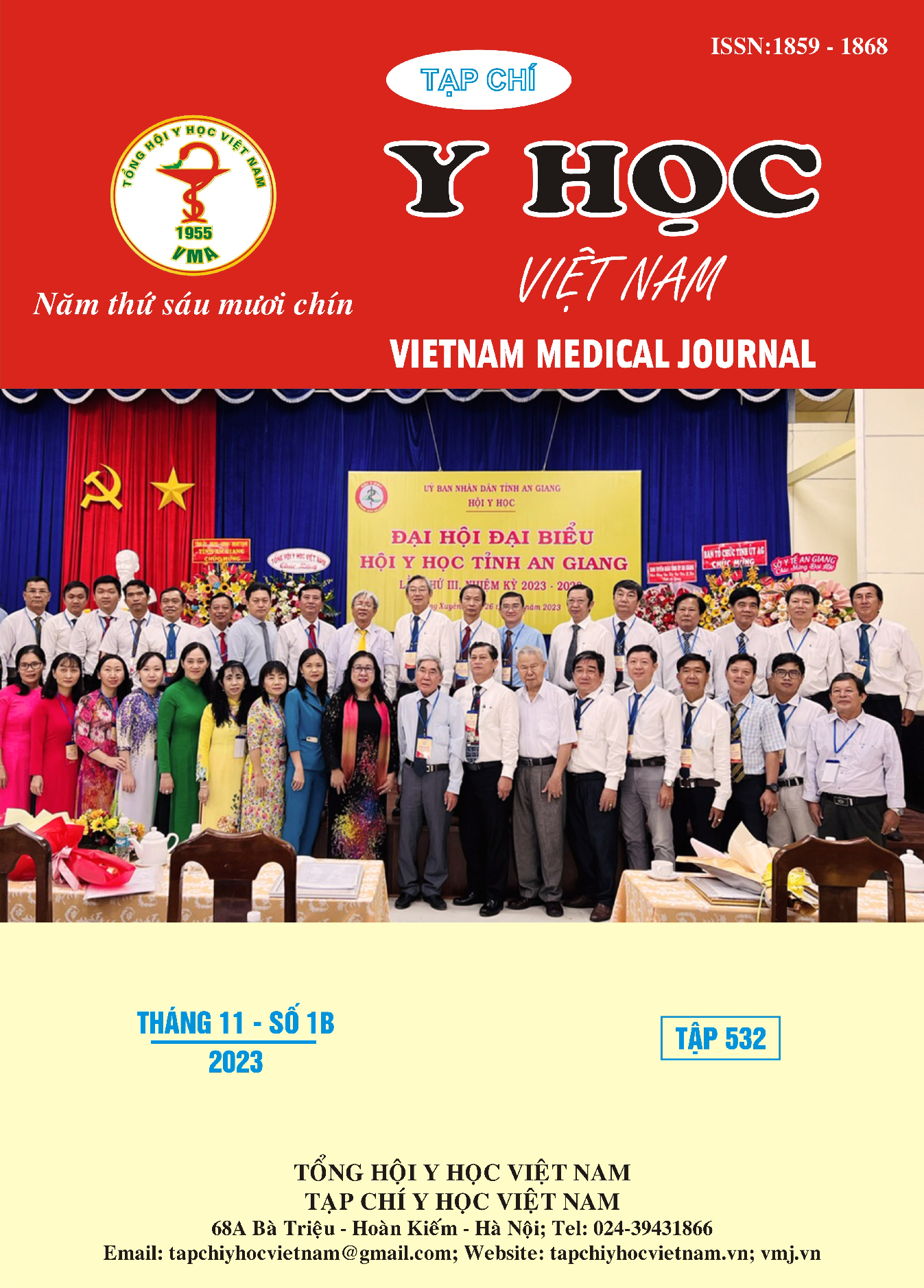SURVEY THE CURRENT STATUS OF URINARY TRACT INFECTIONS IN PATIENTS UNDERGOING URINARY TRACT INTERVENTIONS
Main Article Content
Abstract
Purpose: Clinical and paraclinical characteristics of urinary tract infections in patients undergoing urinary tract intervention at the Urology and Dialysis Center of Bach Mai Hospital. Materials and methods: retrospective study combined with a cross-sectional description of 101 infected patients undergoing urinary tract intervention at the Kidney - Urology & Dialysis Center of Bach Mai Hospital from July 2022 to August 2023. Results: The average age of the study subjects was 50.98 ± 18.83 years, with 44% of patients from 46 to 65 years old. Male patients account for a higher proportion of 57%. The most common risk factor is urinary stones with 63%, the most common clinical symptoms are fever (74.26%), painful urination (53.46%), and back pain (37.62%). Urine cultures were 78% Gram-negative with the most common organism being P. aeruginosa and 22% Gram-positive with the most common organism being E. faecium. The ESBL production rate of E. coli is 60%, and K. pneumoniae is 33.33%. E. coli is also sensitive to imipenem, beta-lactam + beta-lactamase inhibitor, nitrofurantoin, and fosfomycine, and highly resistant to quinolones and cephalosporins. P. aeruginosa and K. pneumoniae are highly resistant to most common antibiotics. Conclusions: The results of the study show that urinary tract infections in patients undergoing urinary tract intervention are often complicated by bacterial agents with a high rate of ESBL secretion and multidrug resistance.
Article Details
Keywords
urinary tract infection, urinary tract intervention, antibiotic resistance.
References
2. Đàm Quang Trung. Đặc điểm lâm sàng, cận lâm sàng và xác định căn nguyên vi sinh ở bệnh nhân nhiễm khuẩn tiết niệu. Đại Học Hà Nội. Published online 2018.
3. Kim JW, Lee YJ, Chung JW, et al. Clinical characteristics of postoperative febrile urinary tract infections after ureteroscopic lithotripsy. Investig Clin Urol. 2018;59(5):335-341. doi:10.4111/icu.2018.59.5.335
4. Bùi Thị Thu Trang. Nhận xét đặc điểm lâm sàng, cận lâm sàng và căn nguyên vi sinh của nhiễm khuẩn tiết niệu tại khoa Thận - Tiết niệu bệnh viện Bạch Mai. Đại học Y Hà Nội. 2019.
5. Đặng Thị Việt Hà, Nguyễn Văn Thanh, Đỗ Gia Tuyển. Đặc điểm lâm sàng, cận lâm sàng, biến chứng và các yếu tố thuận lợi của nhiễm khuẩn tiết niệu tại khoa Thận - Tiết niệu bệnh viện Bạch Mai. Học Thực Hành. 2016;1019:41-44.
6. Phan Thị Bích Hồng. Đặc điểm lâm sàng và căn nguyên vi sinh ở bệnh nhân nhiễm khuẩn tiết niệu tại khoa Thận Tiết niệu bệnh viện Bạch Mai. Đại Học Hà Nội. Published online 2001.
7. Lê Văn Hiệp. Đánh giá tình trạng nhiễm khuẩn tiết niệu bệnh viện liên quan đến ống thông bàng quang ở bệnh nhân điều trị tại khoa hồi sức tích cực. Đại Học Hà Nội. Published online 2020.
8. Gupta K. Emerging antibiotic resistance in urinary tract pathogens. Infect Dis Clin North Am. 2003;17(2):243-259. doi:10.1016/s0891-5520(03)00006-0
9. McDanel J, Schweizer M, Crabb V, et al. Incidence of Extended-Spectrum β-Lactamase (ESBL)-Producing Escherichia coli and Klebsiella Infections in the United States: A Systematic Literature Review. Infect Control Hosp Epidemiol. 2017;38(10):1209-1215. doi:10.1017/ice.2017.156


